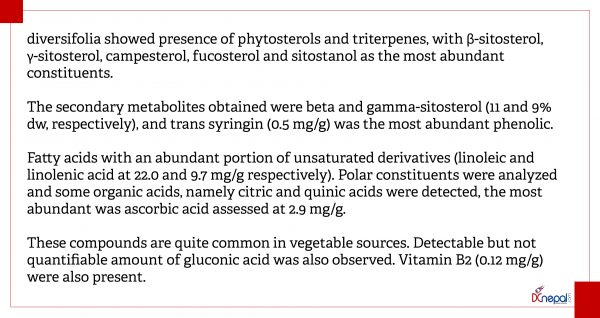Asian Useful Plant Girardinia diversifolia (Allo) for HepatoCarcinoma

Asian Traditionally used multiuseful plant Girardinia diversifolia is commonly called Allo in Nepali, Xie zi cao in Chinese, Bichchhoo in hindi and in English it is commonly known as “Himalayan nettle”. Due to the presence of stinging hairs, it causes irritation on the skin when it is touched G. diversifolia is a stout, erect, perennial herb.
It can grow from 25 to 200 cm height with perennial roots stock. The aerial parts are armed with numerous slender stinging hairs. Its leaves are broad, palm shaped and deeply 3-5 lobed; lobes are saw-toothed with bristles with broad and palm shaped. Flowers are yellowish, clustered in a panicle: male flowers are white in lower axillary panicles, and female flowers are in upper bristly axillary and terminal panicles. The plant is found on clump and each clump has many stems. The stem bark contains strong, smooth and light fibres largely used for preparation of textiles, in Nepal. Flowers comes from July to September and fruits from September to November.

The plant is largely used in traditional medicine for different diseases like constipation , gastric disorders, chest pain, rheumatism, tuberculosis, headache, joints aches, diabetes, eczema, intestinal worms and inflamed pancreas. Root paste is applied in dog bite. Leaf juice is used to treat in asthma, gastritis, headache, joint pain, tuberculosis, snake bites, abdominal pain and indigestion, cough, diarrhea, gonorrhea, delivery problem, bone fracture and to conduct smooth delivery, internal injury, blood purification, for body warmth and increase hemoglobin in blood. So, G. diversifolia has been important source of herbal medicine for rural areas as well as urban areas.
It is also famous traditionally for the uses of the bast fibre of bark for making varieties of clothing, ropes, mats, sacks and various other domestic implements and in this context it is among one of the most important non timber forest products used for income generation among rural communities in the Himalaya region of Nepal. Young leaves and inflorescences are cooked as a green vegetables. Roasted seeds are pickled. It is also used as leafy vegetables for preparing snacks.

The antioxidant activity was moderate while a significant ability to inhibit Acetylcholinesterase (AChE), butyrilcholinesterase (BuChE), tyrosinase, alpha amylase and alpha glucosidase was observed. AChE predominates in the healthy brain, with BChE considered to play a minor role in regulating brain ACh levels. Both enzymes represent legitimate therapeutic targets for ameliorating the cholinergic deficit considered to be responsible for the neurological decline occurring in Alzheimer’s disease (AD). Tyrosinase is a main enzyme in the synthesis of melanin and its inhibition resulted to be significant showing potential usefulness of the extract for cosmetic uses and skin related diseases.
Amylase and glucosidase are enzymes related to carbohydrate digestion and their inhibition could help to control postprandial glucose levels in diabetes mellitus patients. Considering the amylase and glucosidase inhibition, the observed activities could be considered moderate with values around 1 mmol acarbose equivalent (ACAE)/g for amylase inhibition and 5.4 mmol ACAE/g for glucosidase, demonstrating limited activity.
The recent study revealed that the methanolic extract of G. diversifolia has more cytotoxic effect on hepatocarcinoma cells of human by reducing expression of the low-density lipoprotein receptor. It does not have lipid lowering properties but can alter intracellular cholesterol homeostasis. The plant extract was more effective against Human Pancreatic cell lines as well as Ovarian cell lines. The methanolic extract showed the most potent cytotoxic effect in Huh7 cells with an IC50 of 7.2±2.5 µg/mL, compared to 19.9±1.5 and 38.8±1.2 µg/mL for ethyl acetate and cyclohexane extracts, respectively.
Considering the phytochemical composition of the methanol extract, the cytotoxic activity could be ascribed due presence of overall phytocomplex like phytosterols, fucosterol and flavonoids.
The study was carried out in collaboration between Central Department of Botany, Tribhuvan University, Nepal and laboratory work done in Natural Product Laboratory, Department of Pharmaceutical and Pharmacological Sciences,University of Padova, Italy. Plants were collected from Sindhuligadhi, Sindhuli, Central part of Nepal.
Click here to read the detailed research article entitled “Himalayan Nettle Girardinia diversifolia as a Candidate Ingredient for Pharmaceutical and Nutraceutical Applications—Phytochemical Analysis and In Vitro Bioassays” published in the Molecules Journal on 29 March 2020.
Facebook Comment
latest Video
Trending News
- This Week
- This Month

















